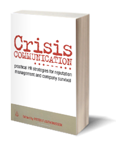Following an outline written in Overpromise and Overdeliver, by Rick Barrera, NettResults uses the following questions to clearly define our client’s brand promise, and thus the message for the public relations we work on.
A winning overpromise — whether it’s brand-new or a rejuvenated version of a previous promise — isn’t born of a sudden flash of inspiration. If it is to truly differentiate you, it must be built piece by piece. Attention must be paid not only to the intricacies of products and services, manufacturing and marketing, but to all the constituencies that must be on board to achieve a break-through. That means current and potential customers, employees, shareholders, distributors and suppliers. After all, you will have to live with the overpromise for some time; align all TouchPoints with it; arrange the entire organization around it; and overdeliver on it. All stakeholders whose suggestions and support have an impact on your company’s success must be part of the conversation.
To begin the journey to a complete understanding of your existing brand promise, consider the questions that follow:
What is the essence of your business? Why was the company started? What was the founder’s vision? What did he or she plan to do better than anyone else? Are you fulfilling that vision now?
This first line of questioning is a way to get the coordinates, to zero in on the real reason so much of your life is being devoted to making the organization you work for work.
What are your brand’s most important attributes? What do customers think of when they hear your company’s name?
Customers’ attitudes have been influenced by word of mouth, by advertising and public relations, by their feelings toward the store where they bought the product or perhaps by a conversation with customer service personnel.
Why do customers buy your product or service? Why don’t they buy your competitor’s product or service?
Asking customers why they buy from you can help to identify the kinds of people who are best served by your product or service. Chances are, they won’t be the ones that were in mind when the brand promise was created.
Why don’t non-customers buy your product or service? Why do they buy your competitor’s?
Learning that some aspect of an overpromise, or of its supporting products and processes, is driving away a substantial number of potential customers should inspire some serious repair work.
What emotions do customers feel when they buy and use your product?
Pottery Barn’s overpromise is more laden with emotion than most because it sells products for the home, a place that people care about deeply. Pottery Barn’s overpromise acknowledges that furnishing and decorating a home can be stressful by presenting the company as a kind of home decorating mentor.
If your brand was a person, how would you describe him or her? In the same vein, how would you describe each of your competitors?
Think about the market in which you sell and your target customers.
How do your employees perceive your brand?
Nothing is more important to a company’s success than convincing employees to invest more rather than less, because what you are after is their discretionary efforts on behalf of your brand.
Putting It All Together
Here are the questions you really want the answers to:
What is your reputation?
What are you known for?
What one thing about your company most matters to customers?
Then build your overpromise around it.
If you don’t like the answers to these questions, you’ll need to think deeply about what you want to be known for in the future and how your overpromise will articulate that clearly to customers and potential customers. You’ll then be able to tackle the work of realigning each of your TouchPoints to overdeliver on your overpromise.
If you need to work on your message and your brand promise, then call us today.
Monday, November 1, 2010
Subscribe to:
Posts (Atom)

